Blogs

Understanding Invar Applications: An In-Depth Tutorial on Properties and Uses
Overview:
The article focuses on the properties and uses of Invar, an alloy known for its minimal thermal expansion and high dimensional stability, making it ideal for precision applications across various industries like aerospace and electronics. It supports this by detailing Invar’s unique characteristics, such as its low coefficient of thermal expansion and mechanical strength enhancements through heat treatment, which are critical for ensuring accuracy and reliability in high-performance engineering contexts.
Introduction
Invar, an alloy primarily composed of iron and nickel, stands out in the materials landscape due to its exceptional thermal expansion properties, which are nearly negligible across a wide temperature range. This characteristic makes it indispensable in industries where precision is paramount, such as aerospace and electronics.
As procurement managers navigate the complexities of material selection, understanding the unique mechanical properties and historical significance of Invar becomes essential. From its pivotal role in the accuracy of the Riefler regulator clock to its modern applications in advanced measuring devices, Invar’s reliability is well-documented.
Moreover, recent advancements in manufacturing techniques and heat treatment protocols further enhance its performance, making it a compelling choice for high-stakes applications.
This article delves into the multifaceted properties of Invar, its diverse industrial applications, and best practices for sourcing, equipping procurement professionals with the insights needed to make informed decisions in a rapidly evolving market.
Exploring the Unique Properties of Invar
This alloy, primarily made of iron and nickel, is distinguished by its remarkable thermal expansion properties, characterized by a coefficient of thermal expansion that is nearly zero across an extensive temperature range. This unique feature makes this material particularly suitable for invar applications demanding exceptional dimensional stability. Furthermore, this alloy boasts impressive mechanical properties, including a yield strength that has been reported to increase significantly—from 256 MPa to 401 MPa following zirconium treatment, due to mechanisms such as dislocation strengthening and grain refinement.
Its good machining characteristics and resistance to corrosion further bolster its appeal in precision engineering contexts. Notably, this alloy has a Poisson’s ratio of 0.23, which contributes to its overall mechanical reliability.
The historical importance of this alloy is illustrated by its application in the Riefler regulator clock created in 1898, which employed a pendulum made of this material to achieve an accuracy of 10 milliseconds per day. As Clemens Riefler stated, “The Riefler regulator clock, the first to use a special pendulum, served as the primary time standard in naval observatories and for national time services until the 1930s.” For procurement managers, understanding these characteristics is crucial in selecting appropriate materials for specific engineering needs, particularly for invar applications, ensuring that performance requirements are met without compromise.
Additionally, recent research indicates that adhering to proper heat treatment protocols is vital for maintaining low internal stress during fabrication and service. For instance, a case study on the heat treatment of a specific alloy recommends:
- Full annealing at 1550°F for 1 hour
- Full annealing at 1350°C for 2 hours
- Followed by air or oven cooling
Adhering to these guidelines guarantees the integrity and performance of the material in invar applications.
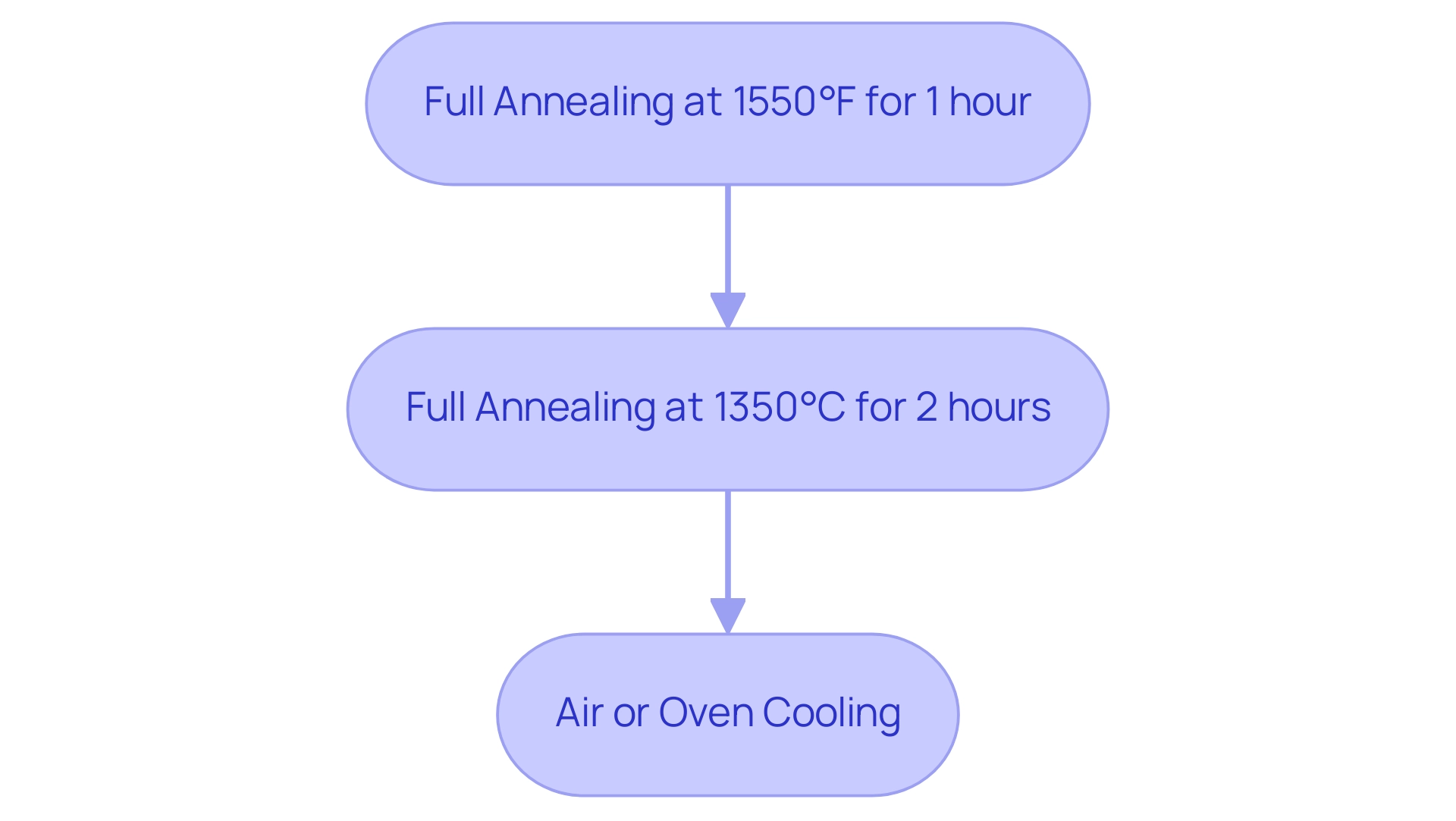
Diverse Applications of Invar in Industry
The distinctive characteristics of this material render it highly desired for invar applications across various sectors. In the aerospace sector, invar applications are indispensable for precision instruments and components that require exceptional dimensional stability, particularly in applications involving satellite components and advanced measuring devices. The capability of a specific alloy to retain its dimensions under extreme temperature variations is essential for guaranteeing the precision and dependability of aerospace components, particularly invar applications, as emphasized by industry professionals, including David Mercier, who observes that these alloys are chosen based on pertinent performance metrics considering linear expansion, Young’s modulus, and density.
Furthermore, this material plays a pivotal role in invar applications, particularly in the manufacturing of optical instruments and gauges, where temperature variations could introduce significant measurement inaccuracies. The electronics sector also gains from this alloy, particularly through invar applications in the manufacturing of circuit boards and connectors that require thermal stability. This versatility not only enhances product performance but also guarantees adherence to international quality standards, making this option an optimal choice for procurement managers seeking reliable solutions, particularly invar applications.
Recent studies comparing manufacturing processes indicate that the alloy produced via selective laser melting (SLM) demonstrates comparable properties to traditional casting, with significant advantages in cost-effectiveness and the capability to create complex geometries. Additionally, the stress relieve anneal process for this alloy requires 2 hours at 600°F, providing a technical perspective on its manufacturing requirements, further solidifying its position in modern manufacturing.
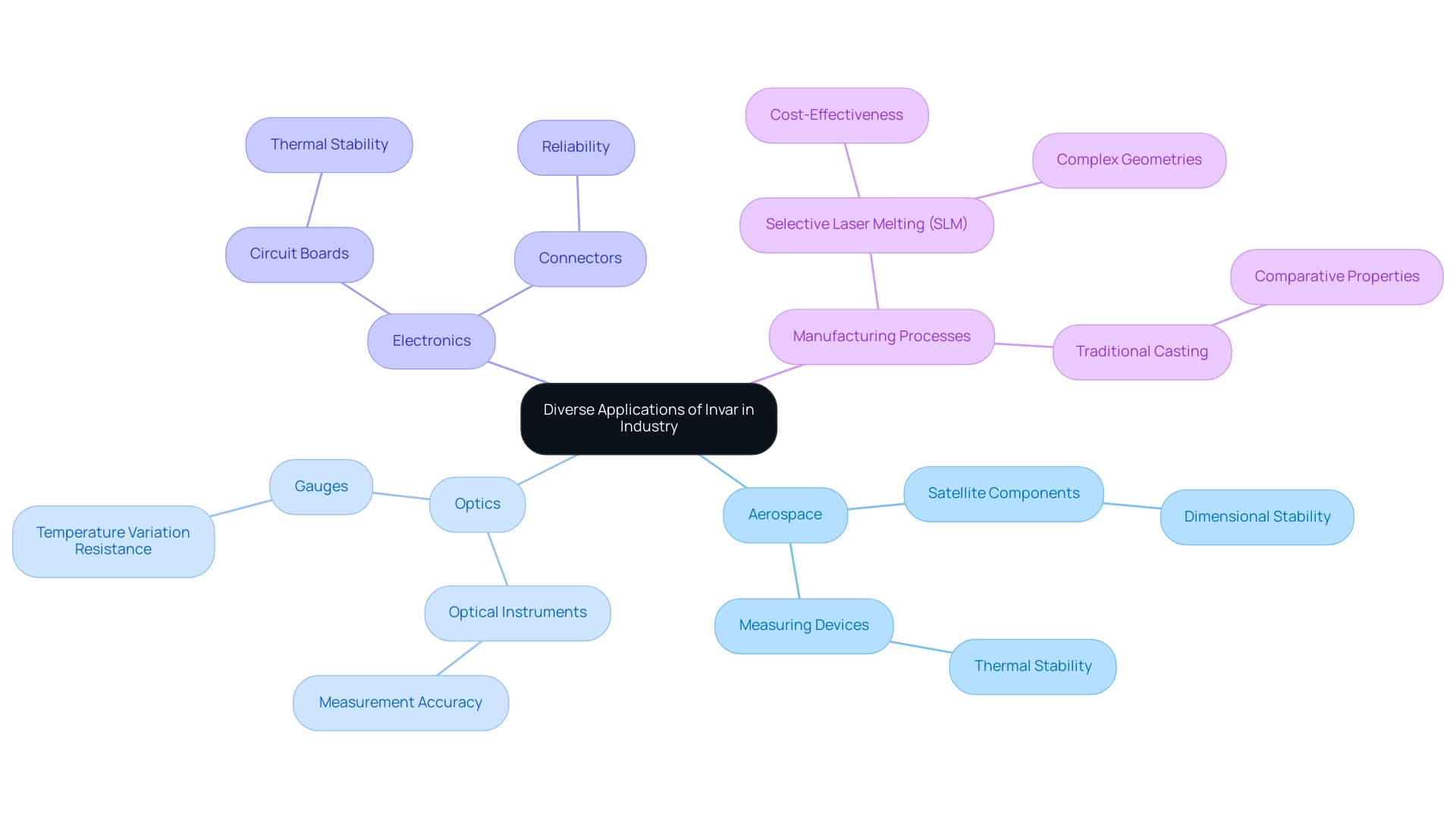
Comparative Analysis: Invar vs. Other Alloys
In the domain of precision uses, the selection of materials is essential, especially when contrasting certain alloys with others like aluminum, brass, and stainless steel. This alloy, celebrated for its low coefficient of heat expansion (approximately 1.2 x 10^-6 /°C), preserves exceptional stability under temperature variations, rendering it a perfect choice for high-precision applications. In contrast, aluminum displays a significantly higher expansion coefficient (around 23 x 10^-6 /°C), which can result in dimensional inaccuracies in sensitive settings.
Although brass (with a coefficient of about 19 x 10^-6 /°C) is favored for its machinability, it does not match the dimensional stability that this alloy consistently provides. Furthermore, stainless steel, while valued for its strength and corrosion resistance, can undergo substantial dimensional changes due to temperature variations (typically around 16 x 10^-6 /°C). Significantly, in marine settings, copper nickel alloys surpass stainless steel because of their exceptional corrosion resistance, especially in salty or brackish waters, along with their enhanced conductivity for heat and electricity, rendering them perfect for uses like heat exchangers and electrical systems.
As emphasized by Son Tung PHAM in Machines & Machining Engineering, the intrinsic characteristics of Invar applications enable it to surpass these substances in temperature stability, ensuring dependability in precision engineering contexts. The case study discussing the interaction between cast iron and aluminum emphasizes the importance of understanding expansion differences, as the design and fit prevent loosening despite varying expansion rates. Moreover, the distinctive features of DOMADIA Nickel Molybdenum Iron Alloy—recognized for outstanding strength, corrosion resistance, and heat stability—highlight the strategic factors for procurement managers when choosing substances for critical applications.
Recent advancements in low expansion substances, such as the Low Expansion ’49’ alloy, also emphasize ongoing progress in this area, which may be pertinent for those exploring substitutes. Thus, when thermal stability is crucial, this alloy frequently stands out as the superior choice.
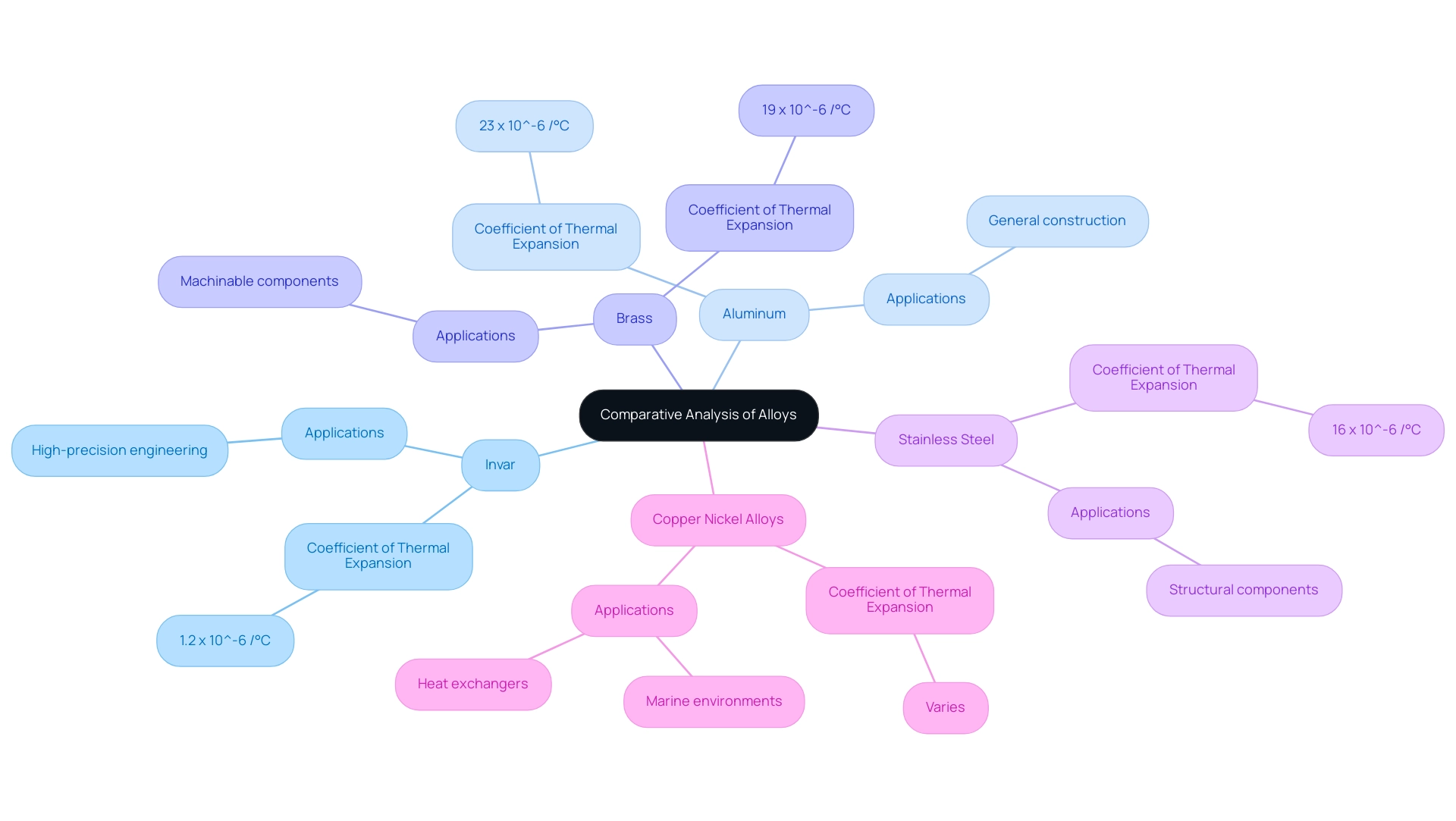
Sourcing Invar: Best Practices for Procurement Managers
When sourcing specific materials, procurement managers must prioritize suppliers with a demonstrated history of delivering high-performance products, such as Mica Tape Products and Non-Sparking Tools, that adhere to international standards. Critical evaluation criteria should include the supplier’s ability to provide consistent quality and reliability, along with their compliance with established specifications. Notably, the minimum requirement for tools in high-volume production is set at 400 parts/life cycles at 180 °C, emphasizing the need for suppliers who can meet these production standards.
Building robust, long-lasting connections with suppliers can provide substantial benefits, such as enhanced negotiation results, better pricing arrangements, and prioritized access to resources, especially during times of scarcity. Furthermore, embracing technology can enhance the procurement process; utilizing e-procurement platforms can offer greater visibility and efficient management of supplier relationships. When considering machining certain alloys, procurement managers should evaluate suppliers that offer spiral-fluted or straight-flute spiral-pointed taps, alongside high-quality insulating materials like Mica Tapes, which provide exceptional thermal and electrical insulation properties.
Mica Tape Products are particularly valuable in invar applications such as fire-resistant cables, where their flame resistance and dielectric strength are critical. As E.F. Wassermann notes, ‘the microscopic background of this alloy and its related materials is fundamentally understood,’ underscoring the importance of sourcing from knowledgeable suppliers who can navigate these complexities effectively. Additionally, a case study on cutting fluids for Invar applications highlights that sulfochlorinated oils are preferred for most operations due to their ability to prevent seizing, while emulsifiable fluids offer greater cooling capacity.
Non-Sparking Tools are crucial in explosive settings, as they prevent sparks that could ignite combustible substances, ensuring safety in critical operations. This strategic approach not only ensures a steady supply of quality materials but also positions procurement managers to respond adeptly to the evolving demands of their industries.
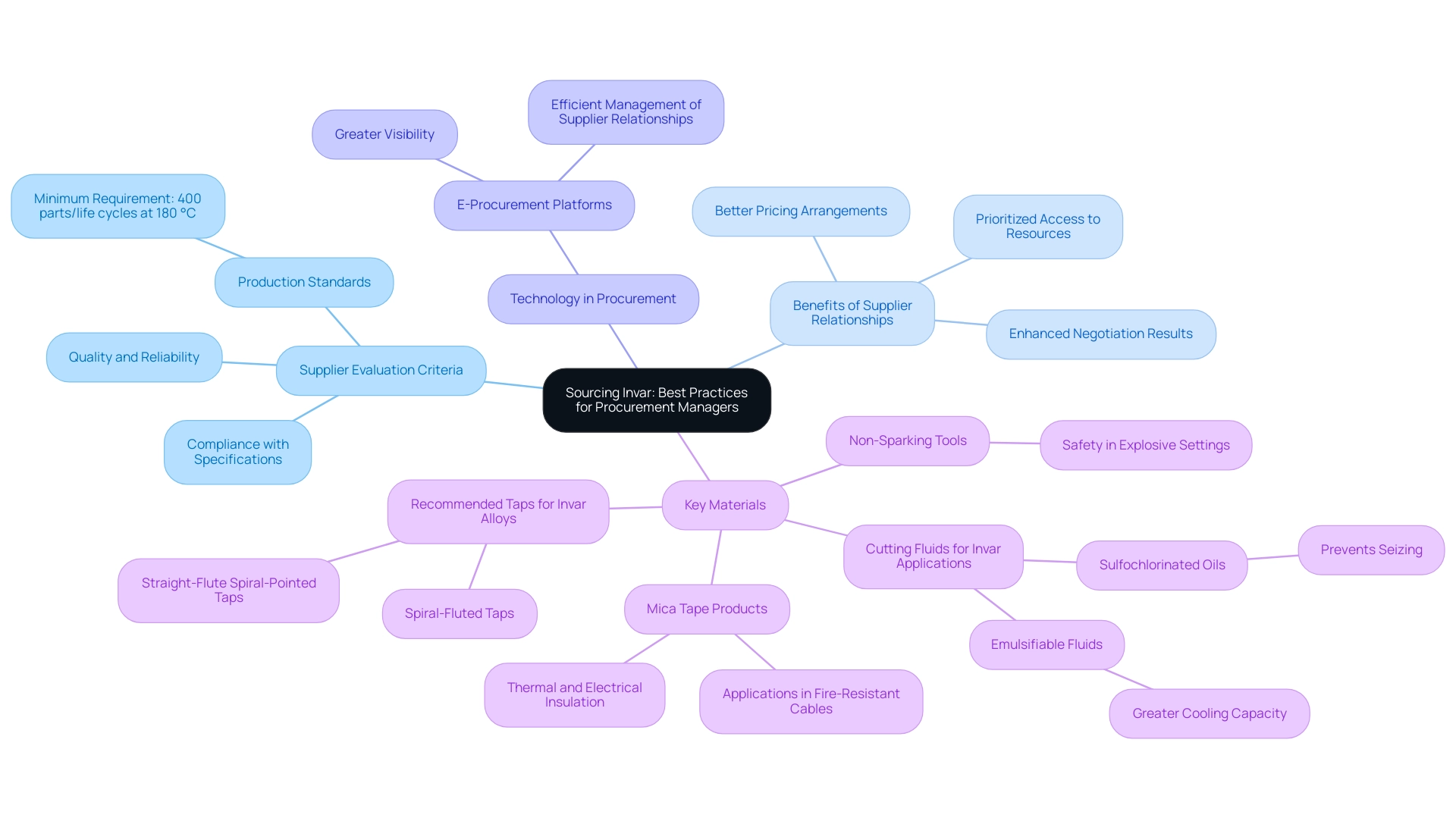
Future Trends in Invar Usage
The ongoing advancements in technology are propelling the demand for this material in critical sectors such as aerospace, electronics, scientific research, and precision engineering. Similarly, Mica Tape products, including:
- Mica Insulation Tape
- Mica Tape for Electrical
- Mica Sheet Tape
known for their high-temperature resistance and electrical insulation capabilities, are increasingly essential in these industries. Mica Insulation Tape is designed for high-temperature resistance, making it ideal for essential uses, while Mica Tape for Electrical offers excellent flame resistance and dielectric strength, crucial for fire-resistant cables.
The Mica Sheet Tape, with its high mechanical strength and resistance to high temperatures, provides robust insulation solutions for large flat surfaces in challenging environments. The 36 alloy market is projected to grow at a CAGR of 4.3% from 2024 to 2030, highlighting the material’s increasing relevance alongside Mica’s role in fire-resistant cables and electrical insulation systems. The market segmentation of Alloy 36 based on type, usage, and geography allows for targeted analysis and strategy development, facilitating a better understanding of market dynamics and consumer preferences.
Innovations in manufacturing techniques and science are set to produce new alloys with improved characteristics, thereby broadening the range of their uses. Furthermore, the increasing focus on sustainability has resulted in a rising demand for resources that enhance energy efficiency and minimize waste. This trend positions Invar applications and Mica Tape products as pivotal materials in the evolving landscape of manufacturing.
Procurement managers must remain vigilant about these developments, aligning their sourcing strategies with emerging market demands and leveraging analytics-driven decisions to create better value in their operations.
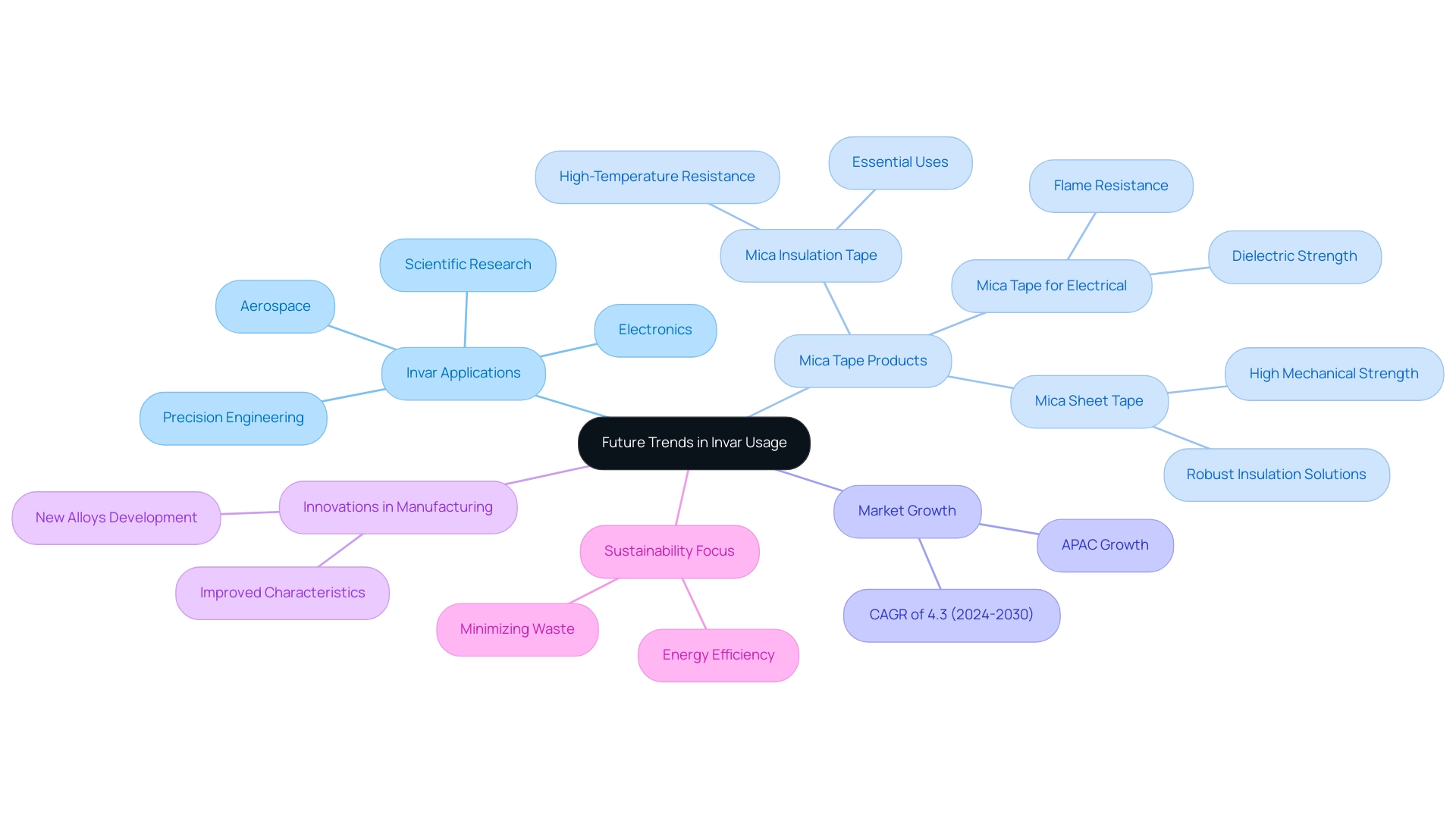
Conclusion
Invar’s unique properties and historical significance position it as a critical material in precision engineering across various industries. Its remarkable thermal expansion characteristics, coupled with impressive mechanical strength and corrosion resistance, make it an exceptional choice for applications where dimensional stability is paramount. From aerospace components to advanced measuring devices, Invar’s ability to maintain accuracy under extreme conditions is invaluable, reinforcing its reputation as a reliable material for high-stakes environments.
The comparative analysis of Invar against other alloys highlights its superiority in thermal stability, making it the preferred option for precision applications. While alternatives like aluminum and brass may offer certain benefits, they cannot match Invar’s performance in maintaining dimensional integrity. Procurement managers must take these factors into account when selecting materials, ensuring that their choices align with the stringent demands of their respective industries.
Sourcing Invar effectively requires a strategic approach, emphasizing partnerships with suppliers that adhere to high standards of quality and reliability. By leveraging technology and developing strong supplier relationships, procurement managers can enhance their operations while ensuring a steady supply of this critical material. As the market for Invar continues to grow, driven by advancements in technology and an increasing emphasis on sustainability, procurement professionals must stay informed and agile in their sourcing strategies.
In summary, Invar’s unparalleled properties and diverse applications underscore its importance in modern manufacturing. As industries evolve and demand for precision materials rises, Invar remains a cornerstone in the pursuit of accuracy and reliability, making it an indispensable asset for procurement managers navigating the complexities of material selection.




